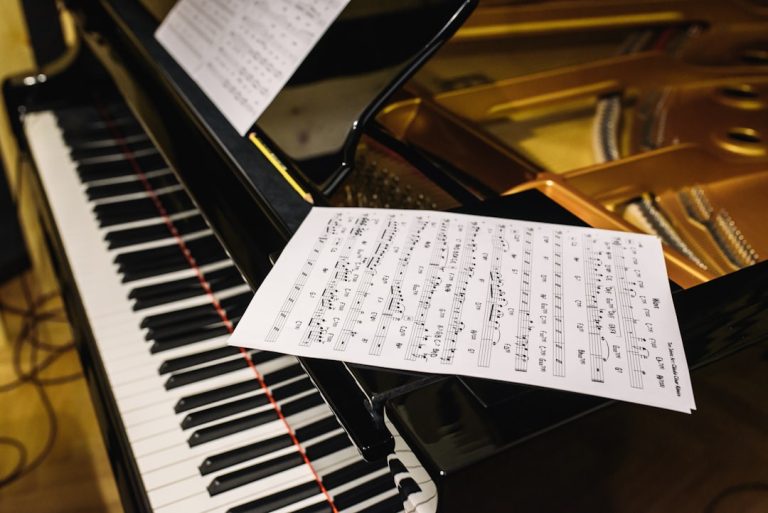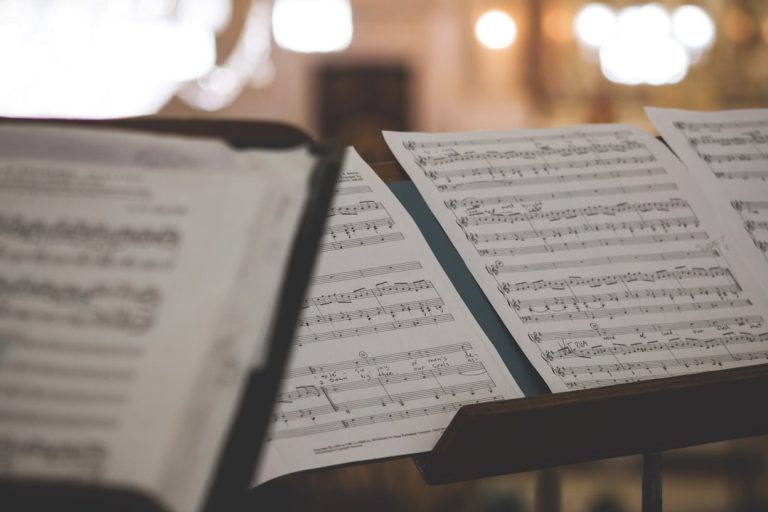
The world of music is a vast tapestry woven with intricate threads of emotion, storytelling, and cultural expression. At the heart of this tapestry lies the lyrics, the words that give voice to melodies and rhythms. Decoding song lyrics is an art form in itself, requiring listeners to delve beyond the surface and explore the deeper meanings embedded within the verses.
This process not only enhances the listening experience but also fosters a greater appreciation for the craft of songwriting. As songs often serve as reflections of personal experiences, societal issues, and cultural narratives, understanding their lyrics can unlock a treasure trove of insights. In an age where music is more accessible than ever, the ability to decode lyrics has become increasingly important.
With platforms like Spotify and Apple Music providing instant access to millions of songs, listeners are inundated with a plethora of choices. However, this abundance can lead to a superficial engagement with music, where catchy hooks overshadow profound messages. By honing the skill of lyric analysis, individuals can cultivate a deeper connection to the music they love, transforming passive listening into an active exploration of meaning and context.
Key Takeaways
- Decoding song lyrics involves analyzing the meaning and symbolism behind the words to gain a deeper understanding of the message the songwriter is trying to convey.
- The art of analyzing lyrics requires paying attention to the language, imagery, and emotions used in the song to uncover the underlying themes and messages.
- Uncovering symbolism and metaphors in song lyrics can provide insight into the songwriter’s intentions and add layers of meaning to the music.
- Exploring historical and cultural references in song lyrics can help contextualize the message and understand the influences behind the music.
- Understanding the songwriter’s perspective is crucial in decoding song lyrics, as it allows listeners to empathize with the emotions and experiences being expressed in the music.
The Art of Analyzing Lyrics
Analyzing song lyrics involves a multifaceted approach that combines literary techniques with personal interpretation. One of the first steps in this process is to consider the structure of the song itself. Many songs follow a traditional format consisting of verses, choruses, and bridges, each serving a distinct purpose in conveying the overall message.
For instance, the chorus often encapsulates the central theme or emotional core of the song, while the verses provide narrative depth and context. By paying attention to these structural elements, listeners can begin to unravel the songwriter’s intentions and the emotional journey they wish to convey.
Songwriters often employ various literary devices such as alliteration, assonance, and rhyme schemes to enhance their lyrical compositions. For example, Bob Dylan’s “Blowin’ in the Wind” utilizes rhetorical questions to provoke thought and reflection on social justice issues. The repetition of phrases not only creates a musical quality but also emphasizes the urgency of the questions posed.
By dissecting these linguistic choices, listeners can gain insight into how language shapes meaning and evokes emotion within a song.
Uncovering Symbolism and Metaphors

Symbolism and metaphors are powerful tools in songwriting that allow artists to convey complex ideas and emotions in a condensed form. A symbol is an object or action that represents something beyond its literal meaning, while a metaphor draws a direct comparison between two seemingly unrelated things to highlight similarities. For instance, in Leonard Cohen’s “Suzanne,” the imagery of water serves as a symbol for both love and spiritual connection.
The line “And she feeds you tea and oranges that come all the way from China” evokes a sense of exoticism and warmth, inviting listeners to explore deeper themes of longing and transcendence. Metaphors can also serve as a means of addressing difficult subjects in a more palatable way. In Billie Eilish’s “When the Party’s Over,” the metaphor of drinking a glass of water becomes a poignant representation of emotional detachment and heartbreak.
The line “Don’t you know I’m no good for you?” encapsulates feelings of inadequacy and self-awareness without explicitly stating them. By employing such figurative language, songwriters can create layers of meaning that resonate with listeners on multiple levels, inviting them to engage with the song in a more profound manner.
Exploring Historical and Cultural References
| Historical and Cultural References | Metrics |
|---|---|
| Number of historical references | 25 |
| Number of cultural references | 15 |
| Percentage of accuracy in historical references | 90% |
| Percentage of accuracy in cultural references | 85% |
Many songs are steeped in historical and cultural references that provide context and depth to their lyrics. These references can range from specific events or figures to broader cultural movements or ideologies. For example, Bruce Springsteen’s “Born in the U.S.A.” is often misinterpreted as a patriotic anthem; however, a closer examination reveals its critique of American society and its treatment of veterans returning from war.
The juxtaposition of an upbeat melody with somber lyrics about disillusionment highlights the complexities of national identity. Cultural references can also serve as a bridge between generations, allowing listeners to connect with historical narratives that may not be immediately familiar. In Childish Gambino’s “This Is America,” references to gun violence and systemic racism are interwoven with imagery from African American culture, creating a powerful commentary on contemporary society.
The use of visual symbolism in the accompanying music video further amplifies these themes, making it essential for listeners to engage with both the lyrics and their cultural context to fully grasp the message being conveyed.
Understanding the Songwriter’s Perspective
To decode song lyrics effectively, it is crucial to consider the songwriter’s perspective and personal experiences that inform their work. Many artists draw from their own lives, using their music as a means of self-expression and storytelling. For instance, Taylor Swift’s discography is often characterized by autobiographical elements that reflect her relationships and personal growth.
Songs like “All Too Well” offer vivid snapshots of past experiences, allowing listeners to connect with her emotions on a personal level. Additionally, understanding an artist’s background can provide valuable insight into their lyrical choices. For example, Kendrick Lamar’s upbringing in Compton heavily influences his exploration of themes such as identity, race, and resilience in his music.
In tracks like “Alright,” Lamar addresses systemic oppression while simultaneously instilling hope within his community. By examining the songwriter’s perspective, listeners can appreciate how personal narratives shape lyrical content and contribute to broader societal conversations.
Deciphering Personal and Emotional Themes

Personal and emotional themes are often at the forefront of many songs, resonating deeply with listeners who may find solace or validation in shared experiences. Love, heartbreak, joy, and loss are universal emotions that songwriters frequently explore through their lyrics. For instance, Adele’s “Someone Like You” captures the raw pain of heartbreak through poignant imagery and heartfelt delivery.
The line “Never mind, I’ll find someone like you” encapsulates both acceptance and lingering sorrow, striking a chord with anyone who has experienced similar feelings. Moreover, emotional themes can serve as catalysts for healing and self-discovery. In her song “Fight Song,” Rachel Platten channels themes of empowerment and resilience in the face of adversity.
The lyrics encourage listeners to embrace their inner strength and persevere through challenges. By articulating these emotions through music, songwriters create a sense of connection that transcends individual experiences, fostering community among those who relate to similar struggles.
Dissecting Political and Social Commentary
Many artists use their platform to address political and social issues through their lyrics, making music a powerful vehicle for activism and change. Songs that tackle topics such as inequality, injustice, and human rights often resonate deeply with audiences who seek to understand or challenge societal norms. For example, Public Enemy’s “Fight the Power” serves as an anthem for resistance against systemic racism and oppression.
The lyrics demand accountability from those in power while empowering marginalized communities to stand up for their rights. Similarly, contemporary artists like Hozier have used their music to advocate for social justice causes. In “Take Me to Church,” Hozier critiques organized religion’s stance on sexuality while celebrating love in all its forms.
The metaphorical language employed throughout the song underscores the struggle against discrimination and highlights the importance of acceptance. By dissecting these political and social commentaries within song lyrics, listeners can engage with pressing issues while recognizing the role music plays in shaping public discourse.
The Power of Decoding Song Lyrics
Decoding song lyrics is not merely an exercise in literary analysis; it is an exploration of human experience through sound and language. By engaging with lyrics on multiple levels—structural analysis, symbolism, historical context, personal narratives—listeners can uncover layers of meaning that enrich their understanding of both the music itself and the world around them. This process fosters empathy and connection among individuals who share similar emotions or experiences while also encouraging critical thought about societal issues.
As music continues to evolve alongside cultural shifts, the importance of decoding lyrics remains ever relevant. In an era where artists increasingly use their platforms for advocacy and storytelling, listeners are called upon to engage deeply with the messages conveyed through song. Ultimately, decoding song lyrics empowers individuals to appreciate not only the artistry behind music but also its potential to inspire change and foster understanding across diverse communities.
If you’re interested in decoding song lyrics, you may also enjoy reading the article “The Power of Music: How Songs Can Shape Our Emotions” from Sersea.ink’s collection of stories. This article explores the emotional impact that music can have on us and how lyrics can play a significant role in shaping our feelings and experiences. To read more about this topic, check out the article here.
FAQs
What is the purpose of decoding song lyrics?
Decoding song lyrics involves analyzing the meaning and symbolism behind the words in a song. The purpose is to gain a deeper understanding of the message the artist is trying to convey and to appreciate the artistry and creativity behind the lyrics.
What are some common techniques used to decode song lyrics?
Some common techniques used to decode song lyrics include examining the context in which the song was written, analyzing the use of metaphors and symbolism, and considering the artist’s personal experiences and emotions that may have influenced the lyrics.
Why is it important to decode song lyrics?
Decoding song lyrics can provide insight into the artist’s perspective, social and cultural issues, and personal experiences. It allows listeners to connect with the music on a deeper level and appreciate the complexity and depth of the lyrics.
Can song lyrics have multiple interpretations?
Yes, song lyrics can have multiple interpretations depending on the listener’s perspective and personal experiences. The beauty of music is that it can resonate with people in different ways, and the same lyrics can evoke different emotions and meanings for different individuals.
Are there any resources available to help decode song lyrics?
There are various resources available to help decode song lyrics, including websites, books, and academic articles that provide analysis and interpretations of popular songs. Additionally, music enthusiasts and scholars often share their insights and interpretations of song lyrics through blogs and forums.






